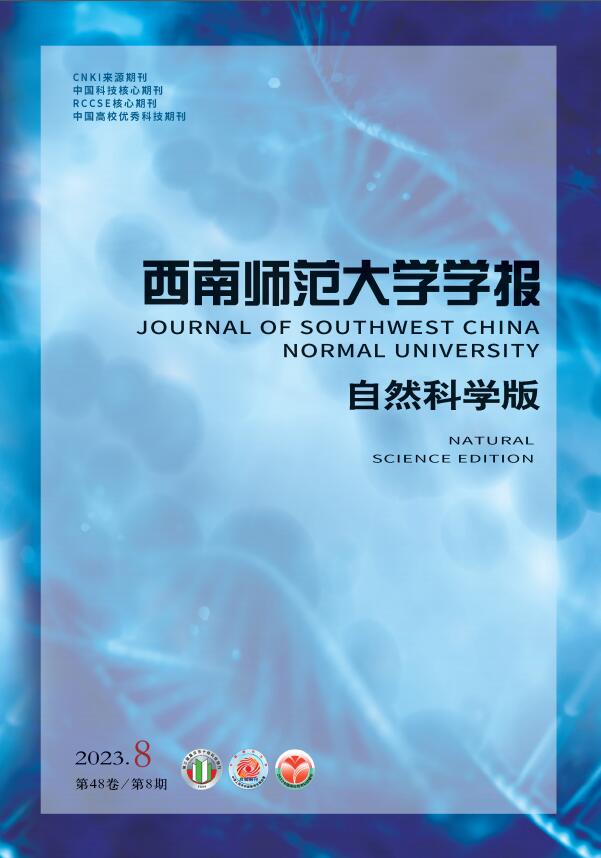-
若随机吸引子的后向并是预紧的,则称该吸引子为后向紧随机吸引子. 文献[1-6]研究了吸引子的存在性以及吸引子的后向紧性,并建立了相对完善的理论体系. 文献[7-11]对随机Zakharov格点方程的吸引子进行了研究. 本文将在文献[10]的基础上,研究带有乘法噪音的随机Zakharov格点方程的后向紧吸引子的存在性.
HTML
-
本文将在l2×
$\ell $ 2空间上讨论如下带有乘法噪音的非自治随机Zakharov格点方程:其中α,λ,β,γ>0,
$\mathbb{Z}$ 是整数集(W1,W2) 是定义在度量动力系统(Ω,
$\mathscr{F}$ ,$\mathbb{P}$ ,{θt}t∈$\mathbb{R}$ )上相互独立的双边实值维纳过程,其中$\mathscr{F}$ 是Ω上由紧开拓扑生成的Borel σ-代数,$\mathbb{P}$ 是(Ω,$\mathscr{F}$ )上的维纳测度. 在Ω上定义映射族$ \circ $ 表示Stratonovich积分意义下的乘法噪声. 对于外力项有如下假设:
(F1) g∈Lloc2(
$\mathbb{R}$ ,l2)是后向缓增的,满足(F2) h∈Lloc2(
$\mathbb{R}$ ,$\ell $ 2)是后向缓增的,满足(F3)
$2\mu > \frac{{4a\lambda }}{{\sqrt \pi }} + \frac{{a\left( {\lambda + 2\lambda \varepsilon - \alpha {\lambda ^2}} \right)}}{{\sqrt {\lambda \beta \pi } }} + \frac{{{a^2}{\lambda ^2}}}{{2\sqrt {\lambda \beta } }} + \frac{{2b}}{{\sqrt \pi }}$ ,其中令
空间l2或
$\ell $ 2上的有界线性算子A的定义为则A=B*B=BB*,并且满足‖Bb‖2≤ 4‖b‖2.
对任意u=(uk)k∈
$\mathbb{Z}$ ,v=(vk)k∈$\mathbb{Z}$ ∈l2,$\ell $ 2,定义空间l2和$\ell $ 2上的内积和范数分别为其中v与v共轭,E=lλβ2×l2×
$\ell $ 2,并且‖·‖λβ与‖·‖等价.令
其中
${z_1}(\theta ) = - \int_{ - \infty }^0 {{{\rm{e}}^s}} {\theta _t}{\omega _1}(s){\rm{d}}s$ 是方程dX+Xdt=dW1(t)的解,${z_2}(\theta ) = - \int_{ - \infty }^0 {{{\rm{e}}^s}} {\theta _t}{\omega _2}(s){\rm{d}}s$ 是方程dY+Ydt=dW2(t)的解,$\varepsilon = \frac{{\alpha \beta \lambda }}{{\lambda {\alpha ^2} + 4\beta }}$ ,易得$|v| = |\hat v|$ ,并且由文献[10]可得,z1(θtω1),z2(θtω2)关于t连续,且则方程(1)可以转化为以下等价形式:
令
令φ0=(u0,y0,v0)T,则方程(8)可以改写为如下简单矩阵形式:
由文献[8, 10]可知,若假设(F1)-(F3)成立,对∀T>0,φ0∈E,方程(8)存在唯一的解φ(·,τ,ω,φ0)∈C([τ,+∞),E),且依赖于初值φ0连续. 因此方程(8)在(Ω,
$\mathscr{F}$ ,$\mathbb{P}$ ,{θt}t∈$\mathbb{R}$ )上能生成一个连续的随机动力系统{Φ(t)},对φ0∈E,t≥0,τ∈$\mathbb{R}$ ,ω∈Ω,有可以验证φ是一个非自治的随机动力系统,即满足
在下文中,设
$\mathscr{D}$ 是X中所有后向缓增集构成的集合,若集合D∈$\mathscr{D}$ 当且仅当则可以证明
$\mathscr{D}$ 是包含封闭的,即若A⊂$\tilde A$ 且$\tilde A$ ∈$\mathscr{D}$ ,有A∈$\mathscr{D}$ 成立.
-
引理1 若假设(F1)-(F3)成立,则对任意后向缓增集D∈
$\mathscr{D}$ ,∀τ∈$\mathbb{R}$ ,ω∈Ω,存在T=T(D,τ,ω)≥1,使得当φs-t∈D(s-t,θ-sω) 时,有其中
证 对任意固定的τ∈
$\mathbb{R}$ ,ω∈Ω,φs-t∈D(s-t,θ-tω),令其中s≤τ. φ(r)与方程(9)作内积,可得
对于(13)式中的每一项,利用Hölder不等式以及Young不等式,可得
令
则由(13)-(15)式可得
对(16)式利用Gronwall不等式,可得
由假设(F3)可得
对(17)式关于s∈(-∞,τ]取上确界,结合(10)式可知,存在T(D,s,ω)≥1,使得当t≥T时,有
因此(11)式得证,即
引理2 若假设(F1)-(F3)成立,则对∀η>0,(τ,ω,D)∈(
$\mathbb{R}$ ×Ω×$\mathscr{D}$ ),φs-t∈D(s-t,θ-sω),存在T(η,τ,ω,D)>0,k(η,τ,ω,D)≥1,使得证 构造一个光滑函数ρ(s)∈C1([0,∞),[0,1]),满足:当|s| ≤1时,ρ(s)=0;当|s|≥2时,ρ(s)=1;当1≤s≤2时,0≤ρ(s)≤1;且|ρ′(s)| < ρ0,ρ0>0. 令
其中
$\mathit{\boldsymbol{\hat \varphi }}$ (r)与(9)式作内积(·,·)E,并取其实部,可得易证
则有
将(19)-(21)式代入(18)式,可得
其中c1,c2,…,c9为常数,对(22)式利用Gronwall引理,可得
因为φs-t∈D(s-t,θ-tω)(s≤τ),结合(10)式可得
由引理1和假设(F1)-(F3)可得,存在T>0,当t>T时,有
因此,由(25)-(28)式可得,对∀η>0,(τ,ω,D)∈(
$\mathbb{R}$ ×Ω×$\mathscr{D}$ ),φs-t∈D(s-t,θ-tω),存在T(ε,τ,ω,D)>0,k(ε,τ,ω,D)≥1,使得
-
定理1 若假设(F1)-(F3)成立,则方程(1)所生成的动力系统存在后向紧随机吸引子.
证 因为{φ(t)}t≥0满足文献[12](定理3.9)中的拉回吸引子的两个存在性条件:
(ⅰ) 非自治随机动力系统{φ(t)}t≥0存在D-拉回随机吸收集K∈D,其中
(ⅱ) 非自治随机动力系统{φ(t)}t≥0存在
$\mathscr{D}$ -拉回后向一致吸收集$\mathscr{K}$ ∈$\mathscr{D}$ ,其中由文献[4]可得,非自治动力系统{φ(t)}t≥0在吸收集K∈
$\mathscr{D}$ 上是后向紧的. 因此方程(8)生成的非自治随机动力系统φ(t) 存在唯一的后向紧$\mathscr{D}$ -拉回吸引子$\mathscr{A}$ ∈$\mathscr{D}$ 和唯一的可测D-拉回吸引子A∈D. 再由文献[13]中的定理6.1知$\mathscr{A}$ =A,故吸引子$\mathscr{A}$ 也是随机的,即φ(t)存在唯一的后向紧$\mathscr{D}$ -拉回随机吸引子$\mathscr{A}$ ∈$\mathscr{D}$ . 再由文献[14-15]可知方程(1)与(8)生成的随机动力系统共轭,进而可得方程(1)存在后向紧随机吸引子.






 DownLoad:
DownLoad: